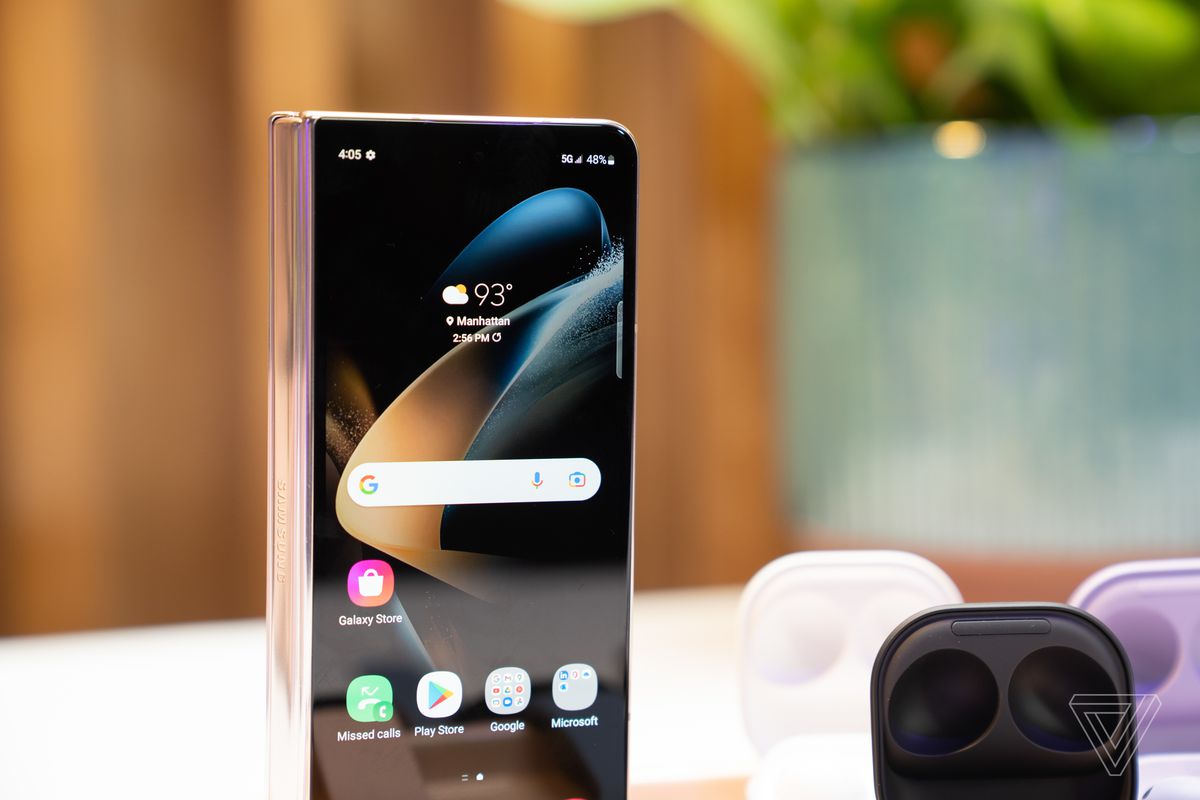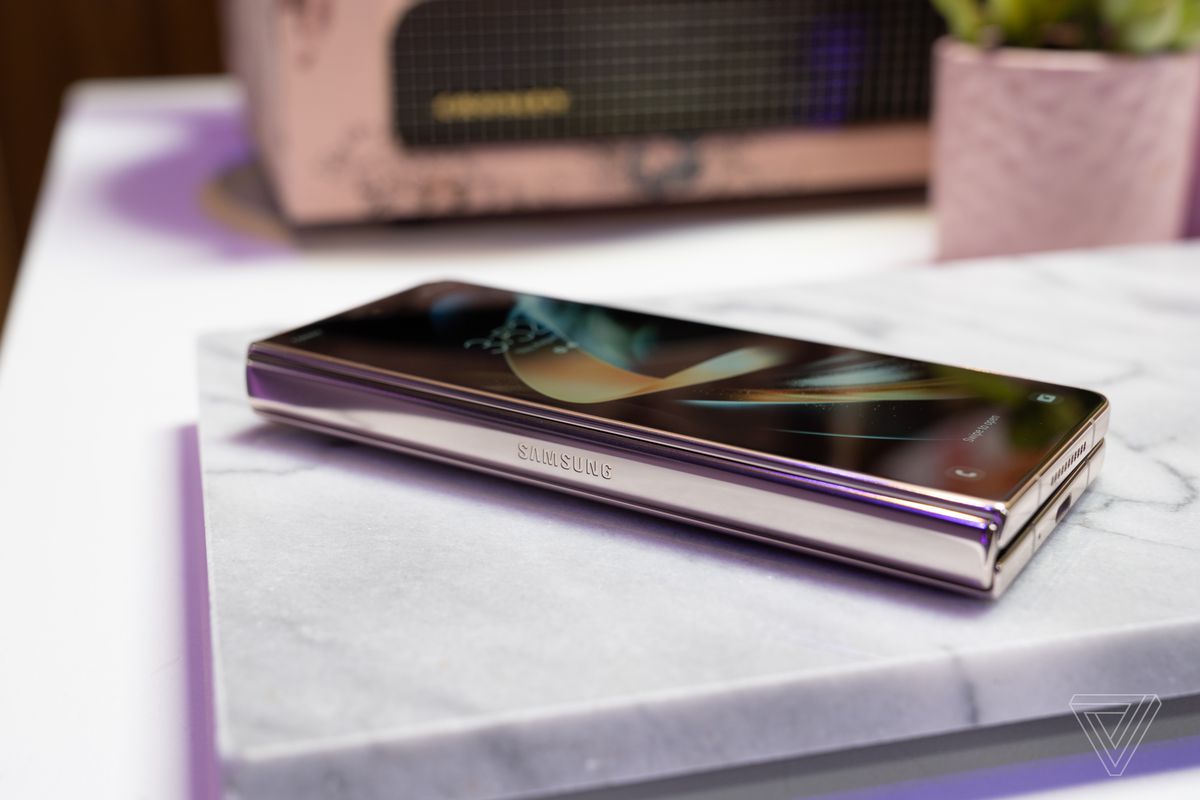American newspaper: Samsung has not yet given a good reason to convince users to buy a folding phone
- Tram Ho
Folding phones seem like a great idea. Phones are great, tablets are fun too, now you put the two together, fold it in half and start using it. Like you got the best of both worlds. Samsung clearly believes so, as they are willing to go through all the difficulties to figure out how to make a really good folding phone. Last year’s Galaxy Z Fold 3 was a pretty decent smartphone, and the newly announced Z Fold 4 looks even better.
But according to the American technology news site The Verge, there is one thing that Samsung has not done – nor have other manufacturers done – and that is to give a real main reason why users might want to own a foldable phone.
And until the Korean company can explain why its foldable lineup is worth the additional costs and experience trade-offs, it will be less of a struggle for users. Find out why they should be willing to give up the familiar phone they used to know.

Specifically, what Samsung needs to do with the Galaxy Fold, as the rest of the industry will need to do with foldable phones, is to convince people that it’s worth buying a phone. more expensive, more fragile and takes up more room in their pocket.
Right now, the worst thing about foldables is that they force users to sacrifice significant elements of their smartphone. Compared to the Galaxy S22 Ultra, the new Fold 4 is a bit shorter, a bit heavier (about 29 grams) and twice as thick. It’s also $600 more expensive. The Ultra has a bigger battery, better camera specs, and a 6.8-inch display with S Pen support. The Fold 4, when unfolded, has a significantly larger screen area, but is still quite bulky. Would you like to trade these?
On its website, one of the first attractions the Korean company offers is that you can set up the monitor on your desk by opening it halfway for hands-free viewing or video recording. In fact, this is an extremely expensive price. Because in this mode, you can only use half of the screen, and this makes the whole original use wrong.
And so far, multitasking seems to be one of the standout advantages of foldable devices. Open up the Galaxy Fold and you can run two apps side by side, or even three or four apps on the screen at the same time. It sounds pretty interesting. Being able to use the browser and the note-taking app side-by-side, or view the calendar and email at the same time, is much better than constantly swiping between two full-screen apps. And viewing two pages of a book at once in the Kindle app is amazing. But there’s a problem, the big screen is only part of the experience.
Because if it’s simply the screen, then the Android tablets have not struggled so much in convincing many users. While Android has gotten better as an operating system for large-screen devices, and the Fold 4’s software based on Android 12L is a good sign, there aren’t too many apps yet.” optimized” for foldable devices. They are still just split-screen experiences, or combine content horizontally or vertically. Some apps are worse, just re-drawing things to fit the larger screen.

Samsung has done an admirable job of bringing all the weirdness of Android to the Fold’s display. And overall, at least everything worked. But the problem is that the experience on the Fold isn’t significantly better than the phone or tablet you’re used to carrying around. But stuffing them both into a single device can actually make them a bit worse.
Over the years, many industry players have tried to create a device that can do everything. There are modular devices, such as Google’s Project Ara or the Asus PadFone. There are foldable phones from the Essential and Motorola brands. But in most cases, they end up being trivial versions of things, because the solution is not 1+1=2. For now, foldable phones are stuck with the same problem: It’s a big, unwieldy, expensive phone that turns into a tiny tablet when unfolded, both in terms of battery life and durability.
Another approach that seems more likely to the future of multi-screen devices is to build the best version of every device, then let users choose which device they want to use at any time. point and ensure that their software, settings, and data flow seamlessly throughout the ecosystem.
Sound familiar? In short, this is Apple’s approach. They’ll happily sell you a Mac, iPad and iPhone based on the idea that they’re all for different things and then use iCloud and the App Store to make everything work across devices. there. Of course, this can be more expensive – although you can buy the iPhone 13 and iPad Mini for less than the Fold 4 – but it comes with fewer trade-offs.
Of course, that doesn’t stop the craving for a versatile device that stops people. Probably everyone will want a touch screen Mac and a folding phone that is both a great tablet. That means less to charge, less to update, and less to carry around. But right now, maybe not many people will accept downgrading their phone just to have it more functional as a decent tablet, while the only new thing is being able to fold it. .
Check out The Verge
Source : Genk
